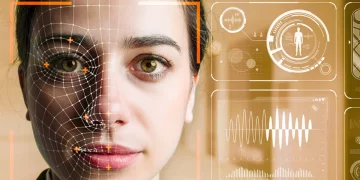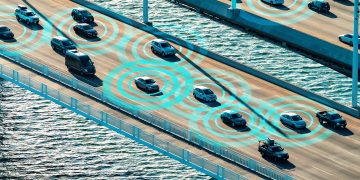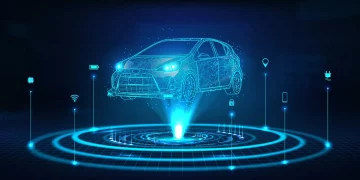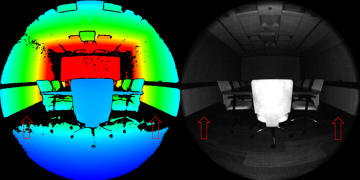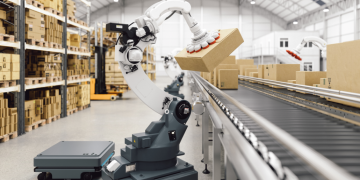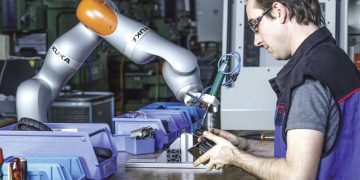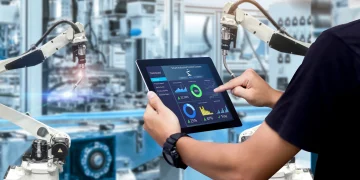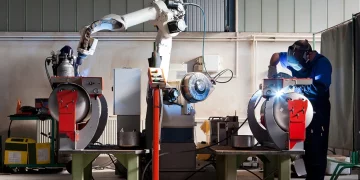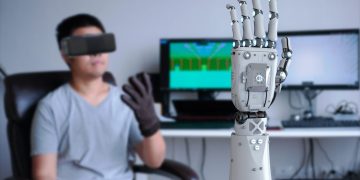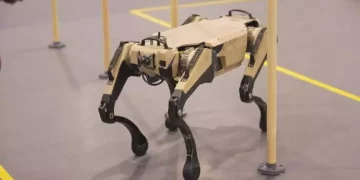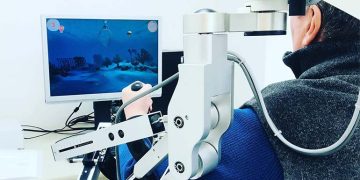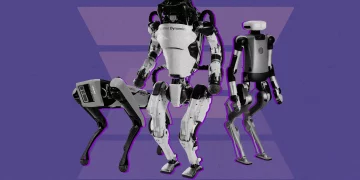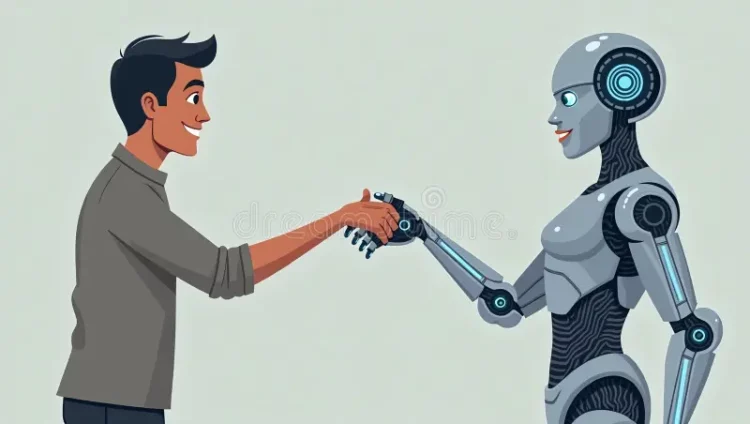Introduction
In the era of rapid technological advancement, robots are transitioning from mere tools to intelligent entities capable of interacting with humans in complex and meaningful ways. Human-robot interaction (HRI), once confined to science fiction, is now a tangible and growing field of research that is reshaping industries, healthcare, education, and even daily life. As robots become more autonomous, intelligent, and integrated into society, the critical question arises: How can we balance human-robot interaction in a way that benefits humanity without diminishing human dignity, rights, or autonomy?
This article explores the multifaceted challenge of balancing human-robot interaction, considering aspects such as ethical considerations, psychological impacts, economic implications, and societal concerns. We will examine both the positive and potential negative consequences of human-robot interaction and propose pathways to achieving a balance that promotes progress while safeguarding human values.
1. The Rise of Robots in Society
Robots have come a long way since their inception. Early industrial robots were mechanical tools designed to carry out repetitive tasks in controlled environments such as factories. They performed jobs such as assembly line work, painting, and welding, typically working in isolation from humans. Over time, the development of artificial intelligence (AI), machine learning, and robotic autonomy has transformed robots into more interactive systems, capable of perceiving their environment, making decisions, and collaborating with humans in increasingly sophisticated ways.
a. The Increasing Presence of Robots in Everyday Life
From personal assistants like Amazon’s Alexa and Apple’s Siri, to more complex robots used in healthcare, education, and service industries, robots are becoming integral to everyday life. Humanoid robots, capable of emotional recognition and social interaction, and autonomous vehicles, equipped with the ability to navigate complex roadways without human input, are examples of this new wave of robots.
However, as robots increasingly become a part of human society, they also raise new questions about the role of human labor, the ethics of AI, and the psychological effects of interacting with machines. Balancing these interactions in a way that benefits both robots and humans while minimizing potential risks is essential for ensuring a harmonious future.
2. The Ethical and Social Implications of Human-Robot Interaction
The interaction between humans and robots is not just a matter of technology; it is deeply intertwined with ethical and moral concerns. As robots take on more roles traditionally performed by humans, society must grapple with the implications of these changes.
a. Ethical Considerations: Trust, Control, and Accountability
One of the key challenges of human-robot interaction lies in establishing a framework of trust and accountability. As robots take on increasingly autonomous roles, the question arises: Who is responsible for the actions of a robot?
For example, in autonomous vehicles, if a robot makes an error leading to an accident, is it the manufacturer’s fault, the programmer’s, or the user’s? Similar questions arise in the healthcare sector, where robots assist in surgeries or diagnose medical conditions. Can we trust robots to make life-or-death decisions, and should they be granted autonomy in such sensitive contexts?
In addressing these questions, it is essential to ensure that robots are accountable for their actions, and that humans can retain a degree of control over robot behavior. While robots can make decisions, human oversight must remain a constant, especially when dealing with issues of safety, privacy, and rights.
b. Psychological Impact: Human Dependency on Robots
As robots become more advanced, the psychological impacts of their interactions with humans cannot be overlooked. The more robots behave in ways that mimic human behavior—expressing emotions, responding to verbal cues, and even forming relationships with users—the more humans may form emotional connections with them.
The development of robots like Paro, a robotic seal used in therapy for dementia patients, has demonstrated the potential of robots to offer emotional comfort. However, there is also the risk that people might develop over-reliance on robots for companionship and social interaction, potentially leading to social isolation or dependency. How do we balance the positive emotional benefits of robots with the need for human connection and interaction?
Moreover, as robots become more capable of recognizing emotions, mimicking empathy, and engaging in complex conversations, we face the challenge of ensuring that these robots do not manipulate human emotions for profit or other ulterior motives.
c. Economic Implications: Job Displacement and the Future of Work
Robots are revolutionizing industries, but they also raise significant economic challenges. With the increasing use of robots in manufacturing, transportation, healthcare, and customer service, there is growing concern about job displacement. Many routine or repetitive jobs traditionally performed by humans can now be performed more efficiently by robots.
How can society balance the positive aspects of automation, such as increased efficiency and lower costs, with the negative impacts, such as unemployment and income inequality? It is vital to explore policies and strategies for retraining workers, creating new job opportunities, and ensuring a smooth transition for workers whose roles are affected by automation.
One potential solution is the rise of collaborative robots or cobots, which work alongside human workers, augmenting their abilities rather than replacing them entirely. This kind of human-robot collaboration could provide a middle ground, allowing robots to take over the more mundane aspects of a job while humans focus on creative or complex tasks.
3. Designing Robots for Positive Human Interaction
The design and behavior of robots play a critical role in shaping how humans interact with them. To ensure that robots contribute positively to society, developers must design robots with the following considerations in mind:
a. Transparency and Communication
For effective human-robot interaction, transparency is key. Robots should be able to communicate their capabilities, limitations, and intentions clearly to humans. Whether it’s a robot in a manufacturing plant, a personal assistant at home, or a robot used for social interaction, users must understand how robots function, what data they are collecting, and what decisions they are making.
Incorporating explainable AI (XAI) into robots’ decision-making processes ensures that their actions are transparent and understandable, reducing the potential for confusion or distrust.
b. Ethical AI and Emotional Intelligence
As robots become more integrated into social contexts, they must not only operate efficiently but also possess emotional intelligence. This involves understanding and responding to human emotions appropriately, fostering trust and rapport in human-robot interactions.
Designers of robots must also prioritize the integration of ethical AI principles, ensuring that robots are designed to respect human autonomy, privacy, and dignity. Moreover, these robots should be programmed to adhere to established ethical guidelines, avoiding actions that could cause harm or exploit human vulnerabilities.
c. Human-Centered Design
Ultimately, the success of human-robot interaction depends on how well robots meet human needs. A human-centered approach to robot design focuses on making robots that are intuitive, adaptable, and able to collaborate with humans in ways that enhance productivity, safety, and emotional well-being.
This approach also emphasizes the importance of ensuring that robots remain compliant with human values. For instance, robots should not only respect privacy but also understand and respect cultural and social norms. This requires developing systems that can contextualize human behavior and respond in socially appropriate ways.
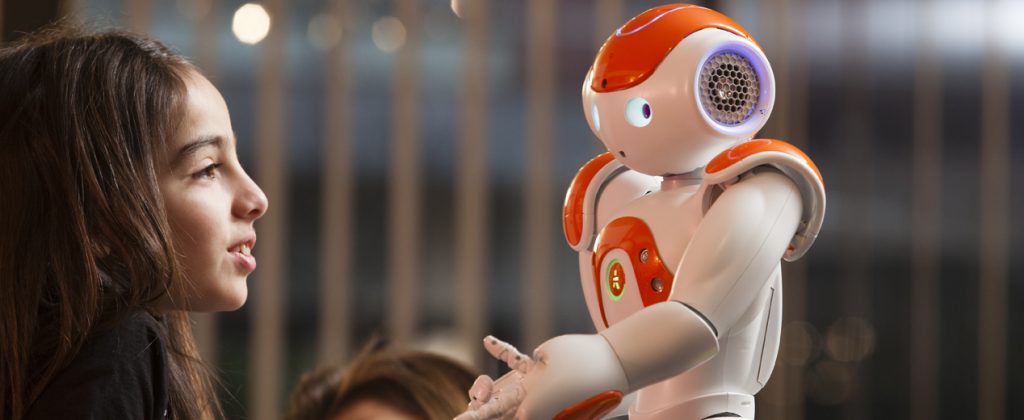
4. Societal Regulation and Governance of Human-Robot Interaction
As robots become more autonomous, there is an increasing need for clear regulations and governance to guide their integration into society. Governments, institutions, and organizations must develop frameworks that address issues of safety, privacy, ethics, and accountability.
a. Ethical Standards and Policies
International bodies, such as the European Union and the United Nations, must develop and enforce ethical standards that govern the use of robots in various industries. These standards should focus on ensuring that robots are used for the benefit of humanity, without violating fundamental rights or causing harm.
b. Public Awareness and Engagement
Society as a whole must be informed about the implications of human-robot interaction. Public debates and discussions, alongside educational initiatives, can help ensure that people understand both the benefits and risks of robotics. This will allow for more informed decision-making and ensure that robot deployment aligns with public interests.
5. The Path Forward: Achieving Balance
The key to achieving a balanced human-robot relationship lies in collaboration—not just between humans and robots, but also between engineers, ethicists, policymakers, and the general public. By fostering an inclusive dialogue about the ethical, social, and economic implications of robotics, we can ensure that robots are designed and deployed in ways that promote human well-being.
In the coming years, the relationship between humans and robots will continue to evolve. By focusing on ethics, transparency, and human-centered design, we can build a future where robots enhance human life without compromising human values or autonomy.
Conclusion
As robots continue to integrate into every facet of society, the balance between human-robot interaction and societal well-being will be one of the most critical challenges we face. With careful attention to ethics, communication, emotional intelligence, and regulation, we can ensure that robots work alongside humans in a way that fosters collaboration, respect, and mutual benefit. The future of human-robot interaction should be one of harmony, where technology serves humanity and helps us achieve a better, more equitable world.






